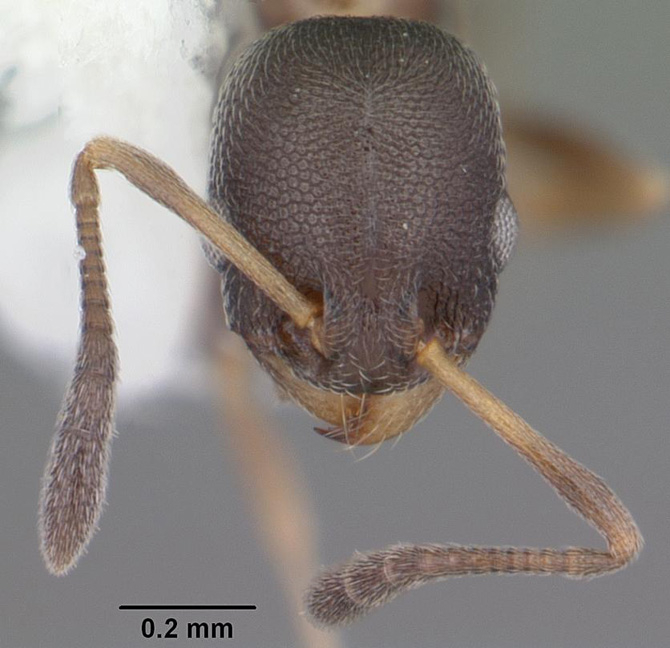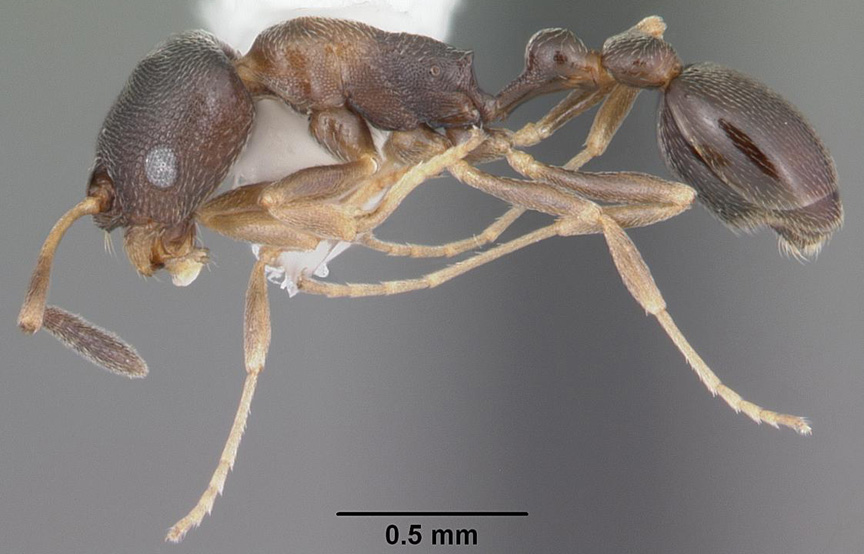Subfamily MYRMICINAE |
|
Cardiocondyla venustula, full face view of a worker (click image to enlarge). Photo courtesy of http://www.antweb.org/ |
Cardiocondyla venustula, full face view of a worker (click image to enlarge). Photo courtesy of http://www.antweb.org/ |
Introduction Identification Cardiocondyla venustula can be differentiated from the other four species of Cardiocondyla reported from the southeastern United States by its dark brown coloration; metanotal groove not being strongly impressed; antennal scapes almost reaching occipital border; and short, denticle-like propodeal spines. Original Description Biology and Economic Importance Life Cycle: This species, similar to others in the genus, produces ergatoid males in addition to alate males. Ergatoid males are known to kill newly eclosed rival males (Frohschammer and Heinze, 2009). Native Range: Africa Distribution United States: Alabama (MEM), Arkansas (Warren and Rouse, 1980), Hawaii (Fisher, 2011), Louisiana (Dash, 2005), and Florida (Seifert, 2003). Literature Cited Fisher, B. L. 2011. AntWeb. Species: Cardiocondyla venustula. Available online at: Frohschammer, S. and J. Heinze. 2009. Male fighting and "territoriality" within colonies of the ant Cardiocondyla venustula. Naturwissenschaften. 96 (1): 159-163. Dash, S. T. 2005. Species Diversity and biogeography of Ants (Hymenoptera: Formicidae) in Louisiana, with Notes on their Ecology. M.S. Thesis, Louisiana State University, 290 pp. Deyrup, M., S. Cover, and L. Davis. 2000. Exotic ants in Florida. Transactions of the American Entomological Society 126 293-325. Seifert, B. 2003. The ant genus Cardiocondyla (Insecta: Hymenoptera: Formicidae) - a taxonomic revision of the C. elegans, C. bulgarica, C. batesii, C. nuda, C. shuckardi, C. stambuloffii, C. wroughtonii, C. emeryi, and C. minutior species groups. Ann. Naturhist. Mus. Wien. B. Bot. Zool. 104(B): 203-338. Links AntWeb |
|




